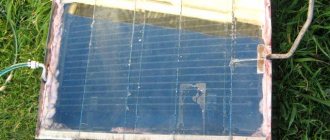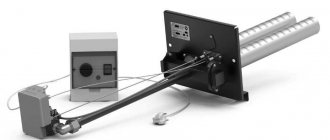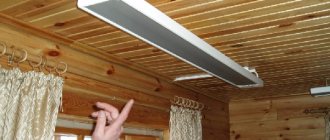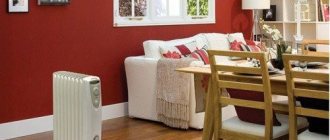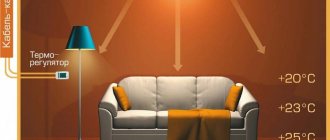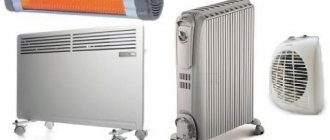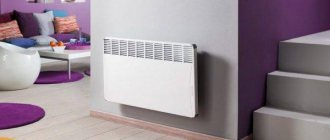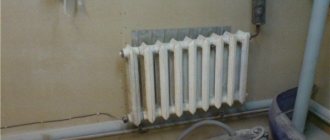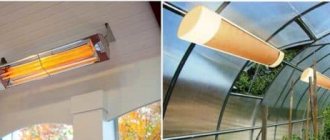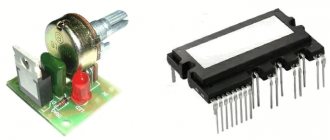With the onset of cold weather, our regular readers often discuss the choice of design and insulation materials for a dog house on the forum. The booth should be beautiful, in harmony with the landscape design of the site and the facade of the house.
Here’s what our regular reader Pavel writes: “Hello, dear ones! Share your experience and how you built the booth. It’s clear that you can take boards, knock them together, insulate them and let the dog live. But, from an aesthetic point of view, this structure may not be entirely in harmony with the owner’s home, possibly causing envy and irritation of the dog. By building with facing bricks, you can probably achieve harmony, but the issue of insulation and wall thickness gives you pause.”
Experienced builders share tips on what materials to choose for insulating a dog house. It will not only be warm, but also beautiful, and the four-legged pet will once again be convinced that its owners love it.
Why insulate the booth?
Some dog owners note that their dog is not afraid of cold weather. He can calmly lie in the snow in -30°C frost, chew a bone and be completely satisfied with his life. However, every dog should have its own cozy corner where it can relax. And it doesn’t matter whether the pet lives all year round in an apartment or on the street.
If a dog lives mainly outside the house, a warm undercoat gradually grows. The colder it gets, the warmer the dog's fur coat. If the dog lived in an apartment, but the owners decided to go to the country for the weekend, you should not leave him outside. The dog simply will not be able to adapt so quickly to being in the cold.
Large dogs retain body heat better, but they also need a comfortable kennel. If the dog is medium or small in size, the house should be very warm. Otherwise, the animal will catch a cold, you will have to go to the veterinarian and keep the dog at home.
Some owners cannot stay in the cottage all the time in winter. They leave the dog with a local watchman or ask neighbors to take care of their pet. In this case, the dog’s booth should be warm and cozy so that he does not feel homeless and lonely. He will know that the owners arranged this corner for him and left him to look after the house. Our regular reader Eduard.N faced this situation. He writes the following: “Tell me how to properly organize the wintering of a dog, the dog is aged (over 10 years old). We agreed with the watchman in the winter that he will come in to feed during the week.”
For an older dog, you need to select high-quality booth insulation. After all, the immunity of such animals is already weakened. If you plan to keep your dog outside in winter, the kennel must be insulated.
Do I need to insulate a doghouse for the winter?
Many owners of four-legged pets wonder whether the dog’s kennel is cold in winter. There is no definite answer to the question - it all depends on the climatic characteristics of the region and the breed of the dog.
Dog handlers agree that long-haired, wire-haired and short-haired dogs with thick undercoat can withstand frosts down to -40°C. Some breeds, such as Huskies, Leonbergs, Moscow Watchdogs and Bernese Mountain Dogs, prefer to sleep in the snow and stay outside even when it gets cold.
Warm home for a dog
However, whether a dog freezes in a kennel in winter depends not only on the breed, but also on the conditions in which the pet grew up. If he previously lived in an apartment, it will be difficult for him to spend the winter in a kennel without insulation. In a warm room, dogs shed more and lose their warming undercoat. It is necessary to adapt the animal's body to new living conditions gradually.
If the region is dominated by cold winters with long periods of sub-zero temperatures, then it is better not to risk the pet’s health and set up a warm dog house.
The need for thermal insulation of a dog house
Following a number of rules will help create an insulated kennel and reduce heat loss from the structure:
- It is better to locate the entrance to the pet’s home in a place where the likelihood of drafts is minimal.
- It is advisable to use wood for the construction of walls - the material has low thermal conductivity.
- The dog house should not be placed on bare ground. The structure must be placed on bricks or wooden beams. The air gap will protect the bottom from freezing.
- A draft is worse than frost for dogs. Therefore, the hole must be curtained with a thick canopy. The material should be dense and weighted so as not to sway in the wind.
- It is important to maintain the optimal size. The dog can warm the compact booth with his breath. However, in a structure that is too cramped, the animal's movements will be limited.
Calculation of the optimal size of a dog kennel
It is necessary to prevent leaks in the winter hut - eliminate all cracks in the roof and take care of waterproofing the roof even before insulation.
Warming the bottom of the booth
If a summer booth was built on the site, in the autumn you need to pay attention to its insulation. You need to start by arranging a warm bedding at the bottom, because this is where your four-legged pet lies in any weather. If possible, it is worth raising the house on supports to a height of at least 10 cm. This way, rain and snow will not get into the booth. The dog's house will immediately become warmer.
If there is enough space in the booth, the insulation is mounted on the bottom inside the booth. Otherwise, you will have to attach thermal insulation to the outside of the booth. Many owners build booths on a foundation. The issue of bottom insulation must be resolved in this case at the construction stage. Otherwise, it will be possible to make the flooring only inside the house.
The insulation should not release toxic substances or unpleasant odors into the environment. Otherwise, it will have a bad effect on the health of the animal. Dogs' sense of smell is known to be acute. They simply will not live in a house that has a strong chemical smell. The inside of the kennel can be insulated with the following materials:
- warm mat;
- hay;
- straw.
By lining the floor of the kennel with these materials, you can greatly increase the comfort of your dog’s stay in his kennel. If the climate is mild and there are practically no severe frosts, you can only insulate the floor. Moreover, some dogs rake out straw. Therefore, it is better to lay down a rug that can be easily cleaned from time to time.
Preliminary preparation
If a dog lives outside all year round, then by winter the animal grows warm fur that protects it from frost. Pets that are not accustomed to such changes will not be able to quickly adapt to new conditions. Prolonged exposure to the cold will negatively affect health, so the booth needs to be heated.
Pet house
The design should be comfortable and fit the size of the dog. A house that is too spacious or too cramped will not provide favorable conditions in cold weather. 10-15 free spaces are left between the tenant and the walls.
Before heating the booth, the structure must be positioned correctly. When building a structure from scratch, you need to provide a foundation. The finished housing is placed on supports (wooden blocks), protecting the bottom from contact with the cold ground. This technical technique will protect against rain and snow getting inside. The optimal distance from the soil is 10 cm. If the space under the house is empty, then it is recommended to fill the free areas with insulation (foam plastic, mineral wool).
How to insulate a kennel
Felt
If winters in your region are frosty, you need to insulate not only the bottom, but also the walls and ceiling of the kennel. Felt is one good option. This is an inexpensive and natural material that is safe for dogs. It is hygroscopic and removes excess moisture well. Therefore, a healthy microclimate will be established in the booth.
The material needs to be cut into pieces of the appropriate size, and then simply nailed to the internal surfaces. The entrance curtain is made from the same material. It should open easily so the dog can get inside.
The advantage of felt is its wear resistance. The dog will not be able to quickly fray it, so the material will retain its properties throughout the cold season.
Mineral wool
If the booth is large or the winters are cold, you need to consider other insulation options. A forum participant asks the following question: “Tell me, what is better to insulate the booth: with mineral wool or polystyrene foam? The size of the booth, based on the size of my Bonnie, turns out to be impressive (St. Bernard girl).”
An excellent option in this case would be mineral wool. This is an environmentally friendly, non-flammable material, characterized by a low ability to transmit heat. This is a hygroscopic material, so fungus and mold do not grow in it.
The only drawback of this material is its soft structure. It needs to be covered with a sheet of moisture-resistant plywood. You need to use basalt wool. Glass wool is not suitable for these purposes.
To avoid shrinkage of the material, it is better to buy solid varieties of stone wool. They are sold in slabs, not rolls. This insulation will last for many years. Moisture-resistant plywood will not allow liquid to reach the cotton wool. All joints must be treated with acrylic sealant.
Expanded polystyrene is not suitable for insulating a booth, just like polystyrene foam. This is a synthetic material that can release harmful chemical compounds during operation. Therefore, the dog will most likely refuse such housing.
Rolled thermal insulation
There is a large selection of roll insulation materials on the building materials market. They have a porous structure and are made with a layer of foil. The thickness is from 3 mm. The thicker the insulation, the better. This option is suitable if the winter is mild and there are no severe frosts.
It is better to choose rolled material made from foam rubber. It has black color. Such insulation will retain heat inside the booth. Its thickness must be at least 8 mm. Thermal insulation based on polyethylene foam is quite fragile and is not capable of retaining heat in the kennel efficiently. This material is more suitable for exterior decoration.
Types of fillers for the booth wall
The types of fillers listed in the previous paragraph are the most favorite among dog owners whose pets live in kennels all year round. Let's find out why preference is given to them.
- Mineral wool. Today, it is one of the most popular materials for insulating a booth, however, to use it, a number of requirements must be met, such as: the mandatory presence of a waterproofing layer and cladding.
- Styrofoam. It retains heat excellently and does not require waterproofing, and is also easy to install. You can also use its analogues, for example penoplex or expanded polystyrene. When using polystyrene foam as insulation, you must carefully remove it under the cladding, as dogs simply love to chew and scratch it.
- Felt. It has high vapor permeability and wind resistance. It is natural and quite cheap.
- Roll insulation. One of the advantages of polyethylene foam or penofol is the ease of installation. Just grab the material along the edges with a stapler and you're done. The downside is that, like all the others, it needs cladding.
Heated booth
It has recently become popular among dog owners to install an electric heated floor system in their winter kennel. In this case, the dog will not freeze even in severe frost. He will spend a lot of time inside such a booth, so you don’t have to be afraid that in severe frost the dog will settle down for the night under the doors on a snow-covered threshold.
There are several options for creating such heating:
- cable;
- special ready-made rugs;
- infrared mats.
The most effective material will be the use of infrared mats. In addition to heated floors, you can buy a thermostat. This will save the amount of electricity spent on heating. The booth will also have a comfortable temperature.
The danger of using a heated floor in a kennel lies in the animal’s body’s reaction to heat. The fact is that due to such heating, the undercoat will become smaller. If a dog spends a lot of time in the cold and does not have the opportunity to warm up in a kennel, it may get sick.
Therefore, you need to set the heating temperature to the minimum value. The temperature in the booth will be above zero, but you should not allow the air to warm up to +18°C or higher. It is enough that the temperature in the booth is kept at +5...+10°C. The dog will not feel severe discomfort due to the sharp temperature difference inside and outside the kennel.
Cable floor heating in the booth
It is best to choose a self-regulating wire for these purposes. In this case, you do not need to buy a thermostat. The colder it is outside, the more the wire will heat up. The same heating system is laid in gutters and on sidewalks to thaw the surface.
The booth requires very little wire. Self-regulating wire is sold in small pieces. Resistive wires are intended for indoor installation. Therefore, in the booth they quickly fail.
Having purchased the wire, you need to connect the electrician to the booth. All wires for connecting the electric heater are laid in metal sleeves so that the dog cannot bite through them. A layer of insulation, for example, mineral wool, is placed on the bottom. Plywood is mounted on it, in which slots are made for the wire. It is laid in a snake pattern with a pitch between turns of 12-15 cm. Metal plates are placed under the wire for proper heat distribution. A waterproof sheet of plywood is laid on top. The thickness of the material should not exceed 1 cm.
Using a plug, the heated floor is connected to the network. Now the pet will be comfortable in its kennel even in severe frost.
Preparatory work
Before you start insulating the booth, you need to pay attention to such important points as:
- The entrance to the booth should be located where the movement of wind and draft is minimal;
- To avoid the penetration of excessive dampness into the kennel from the floor, the dog house should be installed on a hill, and if there is none, then on supports, like on stilts;
- You should not install the kennel in a heavily shaded place, but also not in the sun;
- If the size of the booth is significantly larger than the dog itself, then its heat may not be enough to heat the entire internal space, so it will be better if the dog’s apartments are 10-15 centimeters larger than the dog in any position;
- Build your dog's home exclusively from wood and avoid creating cracks and holes through which heat will escape.
Ready heated mat
There are special warm mats on sale that already have a heating wire sealed into them. The bottom of this product is made of rubber. On top there is a low-pile carpet. It also has a layer of rubber underneath. The dog will not damage the wire with its claws. The mat is simply laid out in the booth and connected to the network using a plug.
If necessary, you can periodically remove the mat and clean it from dirt. In such conditions, the heating device will work for 3-5 years. The dog will not only be warm, but also soft, because the carpet is quite pleasant to the touch.
Infrared heated floor
The best option for heating a dog house would be an infrared heated floor. This is a film with a special conductive carbon paste sealed inside it. It ensures uniform heating of the surface. The film thickness is less than a millimeter. The places where the film is connected to the wires are about 8-10 mm thick.
The advantage of the film also lies in its special heating. It emits waves of the infrared spectrum. They heat objects, but not the air. Therefore, the pet’s paws will be warm, but it won’t be too hot inside the booth, because this is important for the dog’s health.
The insulation is laid down, and a sheet of moisture-resistant plywood is placed on it. A film is rolled out on top of it. In certain places it can be cut with scissors to fit the kennel floor. Metal clips are connected to the contacts. Wires are supplied to them (everything is supplied complete with heated floors). The contacts are insulated with bitumen tape and covered with protective plastic caps. These places need to be deepened into the plywood, so it must be thick enough. The wires lead to the thermostat. It is better to choose a model with a built-in air temperature sensor. A sheet of plywood is laid on top.
If you need to build a kennel from scratch, read about how to build a winter version of a dog house with your own hands.
Subscribe to our Telegram channelExclusive posts every week
Construction of a booth: main aspects
The general principles of building a comfortable and convenient booth are known, and anyone can get similar information on the Internet on numerous sites and forums. Therefore, we will not dwell on these aspects; we will consider the issue of thermal insulation and heat supply to the building during the cold season.
When building a dog kennel, even at the design stage, you should carefully consider the dimensions of the structure. The booth should not be too cramped for the future tenant, but it should not be too spacious either. The main source of heat in an unheated dog's home is the animal's own breath and body temperature. Just imagine, if the room is 2-3 times larger than the size of the dog, how much energy will have to be spent on heating it. Naturally, if you initially plan to place a puppy in a kennel, then the structure must be made “for growth” so that an adult dog feels comfortable in it.
The second point that you should pay attention to is the insulation and waterproofing of housing for animals. The walls and floor of the room must be insulated. Firstly, in winter, it will protect the dog from hypothermia and significant heat losses, and secondly, in summer, on the contrary, it will protect our guard from overheating. Stone and mineral wool, polystyrene foam, and ecowool can be used as thermal insulation material.
